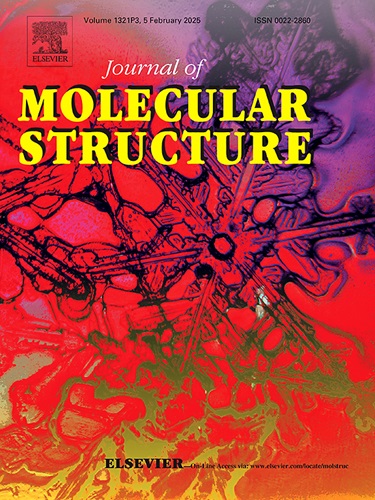Bromine-doped Bi2MoO6 nanosheets: synergistic effects of band structure engineering and oxygen vacancy regulation for boosting photocatalytic activity
IF 4
2区 化学
Q2 CHEMISTRY, PHYSICAL
引用次数: 0
Abstract
Photocatalyst modification by energy level engineering is crucial for efficient free radical generation. Here, a novel strategy was employed to construct bromine-doped Bi2MoO6 (BMO-Br) followed by an in-situ approach using Cetyltrimethylammonium bromide (CTAB) as the bromine (Br) precursor. The Br doping effectively modulated the energy band, increasing the oxygen vacancy concentration in Bi2MoO6. The modification significantly enhanced photoinduced charge separation and active free radical generation, leading to superior photocatalytic performance. The photocatalytic bacteriostatic and sulfamethazine (SM) degradation efficiency over BMO-Br-4 reached 100 % and 70 % within 60 min and 150 min, respectively. This work highlighted a facile yet effective strategy for tailoring the photocatalyst properties, demonstrating promising potential for various photocatalytic applications.
溴掺杂Bi2MoO6纳米片:带结构工程和氧空位调控的协同效应提高光催化活性
利用能级工程技术对光催化剂进行改性是提高自由基生成效率的关键。本研究以十六烷基三甲基溴化铵(CTAB)作为溴(Br)前驱体,采用原位方法构建了溴掺杂Bi2MoO6 (BMO-Br)。Br掺杂有效地调制了Bi2MoO6的能带,增加了Bi2MoO6中的氧空位浓度。该修饰显著增强了光诱导电荷分离和活性自由基的产生,从而提高了光催化性能。在60 min和150 min内,BMO-Br-4的光催化抑菌率和磺胺乙嗪(SM)降解率分别达到100%和70%。这项工作强调了一种简单而有效的调整光催化剂性能的策略,展示了各种光催化应用的巨大潜力。
本文章由计算机程序翻译,如有差异,请以英文原文为准。
求助全文
约1分钟内获得全文
求助全文
来源期刊

Journal of Molecular Structure
化学-物理化学
CiteScore
7.10
自引率
15.80%
发文量
2384
审稿时长
45 days
期刊介绍:
The Journal of Molecular Structure is dedicated to the publication of full-length articles and review papers, providing important new structural information on all types of chemical species including:
• Stable and unstable molecules in all types of environments (vapour, molecular beam, liquid, solution, liquid crystal, solid state, matrix-isolated, surface-absorbed etc.)
• Chemical intermediates
• Molecules in excited states
• Biological molecules
• Polymers.
The methods used may include any combination of spectroscopic and non-spectroscopic techniques, for example:
• Infrared spectroscopy (mid, far, near)
• Raman spectroscopy and non-linear Raman methods (CARS, etc.)
• Electronic absorption spectroscopy
• Optical rotatory dispersion and circular dichroism
• Fluorescence and phosphorescence techniques
• Electron spectroscopies (PES, XPS), EXAFS, etc.
• Microwave spectroscopy
• Electron diffraction
• NMR and ESR spectroscopies
• Mössbauer spectroscopy
• X-ray crystallography
• Charge Density Analyses
• Computational Studies (supplementing experimental methods)
We encourage publications combining theoretical and experimental approaches. The structural insights gained by the studies should be correlated with the properties, activity and/ or reactivity of the molecule under investigation and the relevance of this molecule and its implications should be discussed.
 求助内容:
求助内容: 应助结果提醒方式:
应助结果提醒方式:


